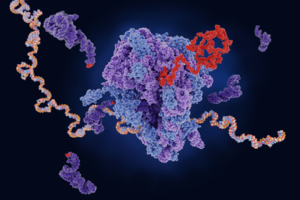A potential therapeutic target has been discovered for the rare metabolic disease PMM2-CDG
The collaboration of three research groups has made it possible to identify cellular and molecular pathways affected in patients with PMM2-CDG through the development of a transcriptomic data analysis technology using patient-derived fibroblasts.
The work, recently published in the journal BBA-Molecular Basis of Disease, reveals the effort undertaken to determine molecular signaling pathways in patients with PMM2-CDG, with the aim of developing potential therapeutic strategies to mitigate the effects of the disease. This project involved teams from the Institut de Recerca Sant Joan de Déu · Hospital Sant Joan de Déu, the Universidad Autónoma de Madrid, and the Universidad de Málaga.
The congenital disorder of N-glycosylation (PMM2-CDG) is characterized as a rare hereditary disease caused by mutations in the PMM2 gene. This gene encodes the enzyme phosphomannomutase 2, which is essential for the proper synthesis and assembly of glycoproteins, crucial for numerous biological and structural functions in the body.
The disease causes a wide range of symptoms, including neurological, liver, gastrointestinal, and developmental problems. As it is considered a multisystemic disease with a variable degree of severity, it is complex to analyze at the genetic and molecular levels, making its treatment particularly challenging.
"The progress in identifying therapeutic pathways and disease markers through transcriptome analysis represents a significant hope for improving the quality of life of patients affected by this disease and developing a system for evaluating advanced therapies," comments Dr. Mercedes Serrano, a researcher at IRSJD.
The study of patient fibroblasts through transcriptomic analysis
Researchers have been able to determine abnormalities in different cellular signaling pathways, including inflammatory processes, defects in the extracellular matrix, in its composition, and in cell migration, from transcriptomic analysis of fibroblast samples derived from patients with PMM2-CDG. Using a computational analysis methodology developed at the Biocomputing Laboratory (ClinSysBioLab) of the Universidad de Málaga.
Additionally, the research teams analyzed the results of treatment with a previously described pharmacological chaperone, which reversed the differential expression of some of the dysregulated genes, opening a potential avenue to evaluate new advanced therapies.
"The combination of genetic tests and biochemical analyses is crucial to detecting glycosylation abnormalities in proteins," according to the research teams in the recent publication.
They also point out that new advances in transcriptome data analysis allow its use from a personalized approach to adapt it to patient needs, thereby optimizing both the diagnosis and treatment of the disease. This precise research on PMM2-CDG patients allows for the application of personalized treatments that increase their likelihood of success.
Reference paper
Gallego D, Serrano M, Cordoba-Caballero J, Gámez A, Seoane P, Perkins JR, Ranea JAG, Pérez B. Transcriptomic analysis identifies dysregulated pathways and therapeutic targets in PMM2-CDG. Biochim Biophys Acta Mol Basis Dis. 2024 Jun;1870(5):167163.

The combination of genetic tests and biochemical analyses is crucial for detecting abnormalities in patients.
